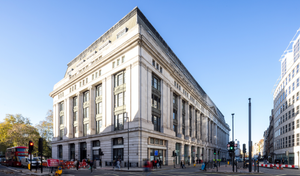Retrofitting existing properties, particularly older ones, presents significant opportunities for investors in the life sciences sector. This process, also known as adaptive reuse, helps to address the scarcity of modern, flexible spaces that meet the high standards required by life science companies.
Architects define adaptive reuse as a process in which buildings are adapted for new uses while retaining their historic fabric and features. This concept has gained traction in recent years, driven by environmental necessity and the growing demand for specialised spaces in urban areas.
Buildings in the life sciences sector fall into four distinct categories: research and development (R&D), production, distribution, and point of care. Each category requires specific types of facilities to support their unique functions. Retrofits typically involve the creation of new R&D space (labs) but point of care facilities such as clinics are also carved from existing office, retail or warehouse buildings. Our deals dataset contains 15 examples of conversions. We have also profiled eight specific buildings where a conversion to life sciences use has been successfully executed.
These buildings are:
- Victoria House in London: an architectural gem converted to life sciences
- Drapers Yard in Leeds: a warehouse reborn as a clinical trials facility
- Vacated art museum in California reincarnated as a life sciences hub
- 245 Hammersmith Road: a conversion to life sciences in London
- Oslo Cancer Cluster Incubator: from offices to shared labs
- Dogpatch Labs: an 1820s warehouse in Dublin's docklands
- Sycamore House in Stevenage: a warehouse transformed
- Joshua Dawson House: science in Dublin's city centre
In this article, we focus on retrofits that create new R&D space in London. New R&D space is urgently needed by 85 per cent of London’s life science sector that is made up of start-ups and SMEs. London does not have the necessary volume of space and traditional real estate models of long Fully Repairing and Insuring (FRI) leases are not suited to these occupiers.
The case for retrofitting
Building new properties can be challenging and financially unfeasible. In contrast, older properties with underutilised capacity offer potential for redevelopment and repurposing into flexible, alternative-use spaces.
Converted properties can significantly improve their carbon footprint through the use of modern materials and eco-friendly building methods, with some reports estimating improvement potential by approximately 60 per cent. From a sustainability perspective, refurbishment can deliver a very substantial reduction in carbon emissions compared with a new-build facility.
The growing demand for lab space often outpaces supply. Just 49 per cent of current demand for space was met in Q2 2024, according to Medcity.
For years, investors and operators were discouraged from investing in labs due to significant requirements such as temperature stability and air quality control. However, advances in construction and technologies have reduced the risks and costs associated with retrofitting projects.




